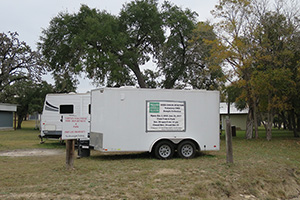The Texas Parks and Wildlife Department (TPWD) has announced chronic wasting disease (CWD) has been detected in a hunter-harvested 1-1/2-year-old white-tailed buck submitted for sampling within Surveillance Zone 3 in Medina County. This marks the first confirmed case of CWD in a free-ranging Texas whitetail.
TPWD says it and the Texas Animal Health Commission (TAHC) are taking steps to deploy an early detection and containment strategy designed to limit the spread of CWD from the affected area and better understand the distribution and prevalence of the disease.
“Although the disease has been discovered in a free-ranging whitetail in this area, we cannot draw any conclusions at this time based on one detection,” said Dr. Bob Dittmar, TPWD’s wildlife veterinarian. “The proactive measures we are taking as part of our epidemiological investigation into this case are in line with the state’s strategies to prevent this disease from spreading any further. The more effective we are at containing this disease within a limited geographic area, the better it will be for our wildlife resources and all those who enjoy them.”
Effective immediately under an executive order issued by TPWD Executive Director Carter Smith, Surveillance Zone 3 (SZ3), which extends across portions of Bandera, Medina and Uvalde counties, is now a CWD Containment Zone, and all associated rules for that designation are in effect. Those rules include restrictions on the movements of carcass parts, as well as live deer possessed under the authority of a permit. The department is also implementing mandatory CWD testing of hunter-harvested deer within this containment zone.
“This emergency action allows us to contain the threat of this disease spreading any further while we collect more information and gather more data,” said T. Dan Friedkin, Texas Parks and Wildlife Commission chairman. “Not only are these temporary emergency measures necessary and consistent with the state’s planned strategies for CWD management, they are essential for ensuring the protection of the state’s white-tailed deer herd and the integrity of our hunting heritage.
“It is my intent for the Commission to address this issue through our regular rulemaking process, which provides opportunities for public comment and input from stakeholders, and that process will begin soon,” Friedkin added.
“With the confirmation of CWD in a free-ranging buck in Medina County, the TAHC is working with TPWD to determine the disease risk in the area,” said Dr. Susan Rollo, TAHC state epidemiologist. “TAHC understands and appreciates TPWD’s immediate response and temporary measures to prevent the inadvertent spread of CWD to other parts of Texas.”
TPWD said this most recent detection of CWD resulted from enhanced voluntary testing of hunter-harvested deer in SZ3. TPWD’s sampling goal for SZ3 for the 2016-17 hunting season is 1,749 samples. The department has so far received about 720 samples from hunter harvests and roadkills within the zone and anticipates receiving about 200 additional samples from deer breeding facilities and associated release sites in SZ3.
“TPWD is very appreciative of the effort and cooperation that has been put forth by landowners, hunters and local officials in the area,” Smith said. “Our ability to control this disease is directly related to the cooperation offered by the citizens of Medina, Bandera and Uvalde counties, and we pledge to continue to work with everyone to minimize the impacts of this disease as well as these challenging but necessary measures designed to control the spread of CWD.”
While the general deer hunting season is over, TPWD will continue to collect samples from Managed Lands Deer Program (MLDP) properties in the new Containment Zone, as well as roadkills. The department said it is seeking as many additional samples for testing as it can obtain in order to get a better handle on the geographic extent and prevalence of the disease in this area.
Additional information about CWD can be found online.


Thanks to TP&W for being proactive to contain and control this disease. Not to be taken lightly, this is a potentially serious State-wide threat, as TP&W understands well.
can you be more specific on exactly where zone SZ3, zone 3 is please?
Mr. Macey,
There is a good map of the surveillance zone (Medina County) on the TPWD website at: http://tpwd.texas.gov/publications/pwdpubs/media/pwd_bk_w7000_1942.pdf
How does it effect humans?
Thanks to all who are on top of CWD. Could be very bad deal for hunters and ranchers. Have a concern about poachers, they not going to have deer tested.